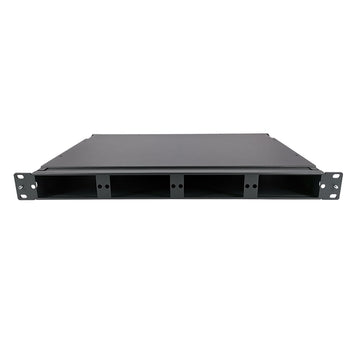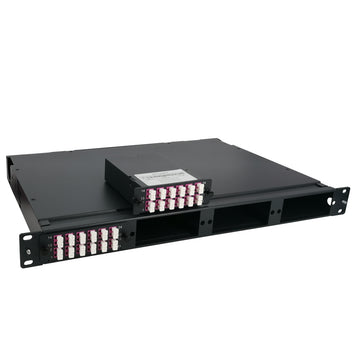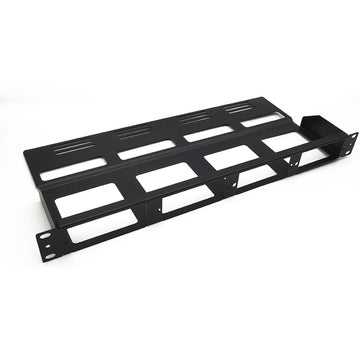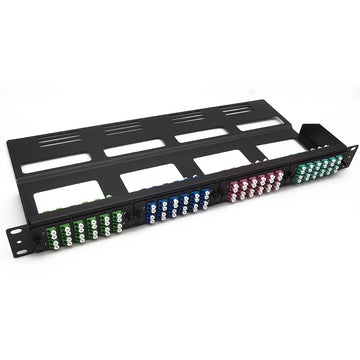SFP vs RJ45: When to Choose Which?
High-end networking demands high-end equipment. RJ45 SFP module is a kind of transceiver modules, which has been utilized as a legacy solution for some years. This article will give a clear explanation to RJ45 vs SFP , and discussing what are the differences and what are they used for? When to Choose Which?
You have a plethora of options, but eventually you have to make decisions on which technology covers each of your applications. When considering all of those options, the understanding of SFP and RJ45 transceivers is pivotal. It’s a core technology that serves as a primary workhorse in many networks.
Overviews of SFP and RJ45
In this article we are going to talk about what is an SFP port and an RJ45 transceivers.
SFP Transceiver
SFP stands for small form-factor pluggable, an SFP module is a kind of fiber optic transceiver module with LC duplex interface. It supports the transmission data rate of 1GbE. SFP optical transceivers can operate on single mode or multimode fiber patch cables. The transmission distance of SFP modules ranges from 550m to 150km

LightOptics's SFP optical transceivers include 1.25Gb and 2.5Gb series. They support duplex, bidi, cwdm, and dwdm applications, and can reach various distances from 500m to 80km. These transceivers adopt a LC interface and are compatible with IEEE802.3ba, SFF 8472, SFP MSA and other standards. They are characterized by low power consumption, small size and high reliability. SFP optical transceivers are mainly used in fast ethernet, gigabit ethernet, SDH/SONET, FC and other environments.
RJ45 Transceiver
SFP copper RJ45 transceiver is a kind of transceiver with copper RJ45 interface. SFP copper RJ45 transceiver modules can support the transmission data rate of 1GbE. They are often used with Cat5 cables. SFP copper RJ45 transceivers are popular to be used for short distance transmission, because the overall cost of the copper network is lower compared with the optical network. Moreover, these connected are present in the network routers or switches.

LightOptics offer SFP-10G-T-80 Cisco, Juniper, Arista, Intel, HP compatible SFP+ transceiver provides 1/10GBase throughput up to 80m over cat6a/cat7 copper cable via RJ-45 connector. This transceiver is compliant with IEEE 802.3an, IEEE 802.3az, SFF-8431 and SFP+ MSA standard. Each SFP+ transceiver module is individually tested to be used on a series of switches, routers, servers, network interface card (NICs) etc. And the copper 10G-T transceiver featuring low power consumption, this easy to install, hot swappable 10G SFP+ transceiver is ideal for enterprise networking for LAN applications and different other networking places using copper connections.
SFP vs RJ45: What’s the Difference?
After getting a general idea about what are SFP, RJ45, and GBIC transceivers, we will talk about the differences among them. The following chart shows the differences among SFP vs RJ45 vs GBIC transceiver modules from 4 aspects.
| Transceiver module | SFP | SFP copper RJ45 |
| Interface | LC duplex | RJ45 |
| Transmission distance | 550m~150km | 100m |
| Cable type | SMF/MMF | Cat 5 |
| Data rate | 1000Mbps | 1000Mbps |
SFP vs RJ45: When to Choose Which?
As is shown in the chart, SFP and SFP copper RJ45 transceiver modules are all used in 1Gbit data transmission. Then when to choose which for the 1GbE network?
When to Choose SFP Transceivers?
There are a number of types of SFP Transceivers based on the different classification standards. Based on the types of optical fibers SFP transceivers work with, SFP transceivers are divided into single mode SFP that works with single-mode fiber and multimode SFP that works with multimode fiber. SFP modules allow having more interfaces on a line card or a switch. Considering security issue, using fiber SFP module is better than Cat5e/6 RJ45 Ethernet cable or SFP RJ45 module in some of the worst circumstances. Besides, SFP transceivers can support the transmission distance much longer than SFP copper RJ45 transceivers and GBIC transceivers. So if you require long transmission distance, SFP transceivers can meet your need. Last but not least, If you already have a line card or a switch with empty SFP slots, then you need to adapt to that.
When to Choose SFP Copper RJ45 Transceivers?
When your budget is not enough to use SFP transceivers, you can choose SFP copper RJ45 transceivers for short-distance transmission. Copper SFP transceiver is convenient for operators to deploy their network systems. Copper SFP module can be plugged directly into the existing copper cabling system, which can make seamless upgrades and replacements by minimizing network disruptions. However, When you choose an RJ45 SFP module, the quality and cost matter a lot. If you have the requirement of long-distance transmission afterward, you can use SFP to RJ45 slot media converters. For they can provide an economical path to extend the distance of an existing network with fiber cabling.
Conclusion
The differences among SFP vs RJ45 transceiver modules include the interface type, transmission distance, and cable type. Your choice among them depends on different situations. LightOptics is deligated in the manufacturing of optical transceiver, we provide a variety of optical transceiver and fiber optic solutions to meet your different needs. If you want to buy LightOptics SFP modules or other transceiver modules with high quality and low cost, please contact us.












